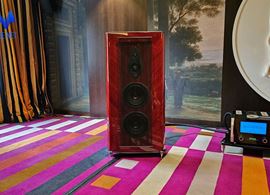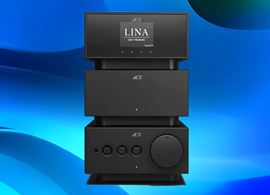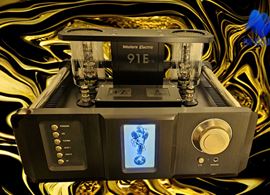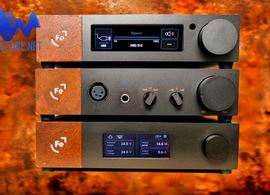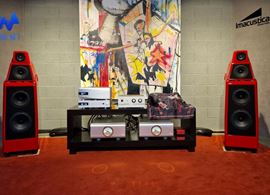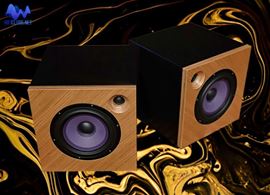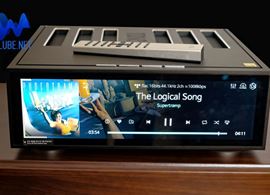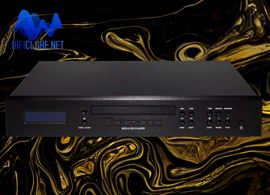By flapping its wings in the Antipodes, Oladra has transformed the audiophile scene on the other side of the globe. Oladra transcends mere engineering—it is pure alchemy.
In this analysis, I aim to demonstrate that the Antipodes Oladra challenges chaos theory by eliminating the ‘butterfly effect’ in the audio universe.
Imagine a butterfly flapping its wings in New Zealand and setting off a storm on the other side of the world. This illustrates the ‘butterfly effect’: small initial actions that can dramatically affect the final results.
Antipodes derives its name from its origins in New Zealand, whereas Oladra comes from a Greek word meaning a rebel who thinks outside the box, like Mark Jenkins—a true iconoclast.
Oladra was born from a simple guiding principle: Music should trigger deep emotions and states of mind, not just physical pleasure.
This server/streamer/reclocker is more than just a playback device for dematerialised (digital) audio. It has been designed to overcome the limitations of conventional systems, which often sacrifice the essence of the performance for purported audio fidelity. Technology should serve the music, not the other way around.
In digital audio, time is the alpha and omega of sound perfection.
At the heart of Oladra lies an obsession with time - or, more precisely, with the perfect synchronisation of the digital signal. In digital audio, time is the alpha and omega of sound perfection.
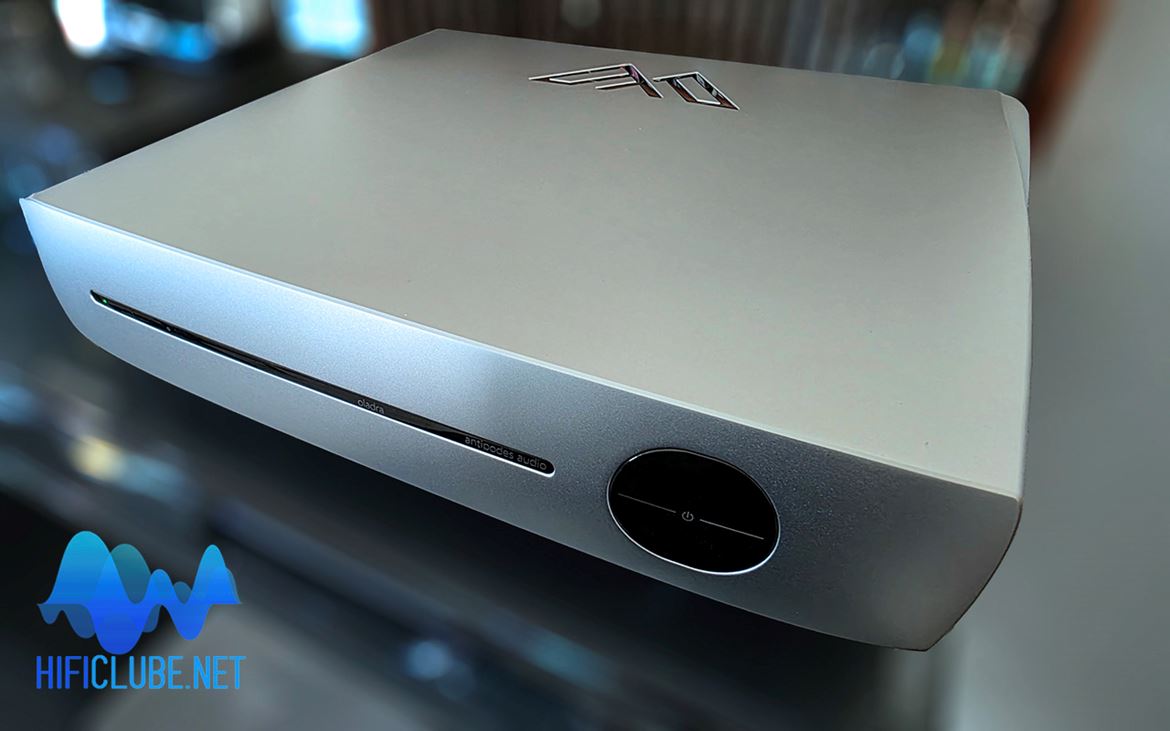
Mark Jenkins
According to Mark Jenkins, its creator, any computer can send data to a digital-to-analogue converter (DAC), but few can achieve perfect timing from the outset of the process. Without this initial precision, the ‘butterfly effect’ may creep in, resulting in catastrophic consequences for sound quality.
Antipodes divides the process into four stages: server application, player application, initial signal synchronisation, and resynchronisation before the DAC.
With three different engines, Oladra contrasts with generic solutions based on a single computer card, offering a clarity that, according to Jenkins, takes each note to a new level.
Technology that ‘serves’ music
Jenkins attributes Oladra's remarkable sound to the perfect square waves and wide bandwidth, which preserve harmonic richness and smooth binary transitions. Even small flaws—such as filter-induced delays—can jeopardise this precision, like a breeze that later turns into a storm in chaos theory.
He claims this is also attributable to the revolutionary triple cascade switched-mode power supply, refined over six years to replace sluggish linear supplies. Featuring three independent regulators and compact transformers, it delivers fast, clean power, minimising noise at the source.
Jenkins says the result is a vibrant, natural sound, demonstrating that minor technical adjustments can significantly improve the listening experience and create a more dynamic and authentic sound. We shall see/hear if that's indeed the case.

Alien Spaceship
Sculpted from a single metal alloy block, Oladra weighs a hefty 20kg. To prevent straining your back, it is wise to enlist someone to assist you in placing it on a sturdy table.
Unpacking revealed a sculptural marvel inspired by Gaudi's fluid, organic architecture. It has no straight lines or angles; if it were round, it could be an alien spaceship. Everything is fused; there are no nuts and bolts visible
Note: my unit was silver-coloured but can also be ordered in black.
A long slot on the front panel houses two discreet LEDs: green (On) and amber (Standby). To the right, a large black acrylic ‘Power’ button emits a hollow mechanical sound and doesn't light up when pressed. The top cover features a large, engraved logo of Antipodes. Simple. Powerful. Discreet.
The rear panel is not as artistic, but it offers plenty of connectivity: SSD slots (3 x 8 TB = 24 TB of storage) and connections for Word Clock (BNC) AES3, S/PDIF (coaxial and BNC), I2S RJ45/HDMI, and Network Direct Streaming.
Inside are four processing stages: a 64GB RAM V7H server, a V7X transport, and dual reclocking with femtosecond precision. However, none of this technology makes sense if it doesn't serve the music and the listening experience.
Therefore, I must tread carefully from now on, as the usual audiophile litany no longer applies to Oladra. To proceed, one must reinvent the art of reviewing.
Kind of Blue
As I would typically write, Paul Chambers‘ bass notes in “Blue in Green” sound solid and taut; Bill Evans’ piano's middle registers resemble soap bubbles floating in a damp studio in New York in 1959; and Miles Davis' trumpet's high notes sound razor-sharp.
However, this audiophile gibberish fails to capture Oladra's magic. Beyond Chambers’ pulsing rhythm now also lies his artistic intent; Evans’ piano chords acquire a fleeting yet tangible lightness, while Coltrane’s soaring sax seems to briefly challenge Davis’ muted trumpet. And it responds, breathing, crying, and delicately lingering above Cobb’s languid brushwork tracks drawn on the Ludwig drumkit. It's as though we hear this jazz icon for the first time.
Chopin’s Nocturnes
When we listen to Maria João Pires play Chopin’s Nocturnes, it’s not just the notes she plays—it’s also the delicate movement of her fingers across the keys, the silence between phrases, and the emotion held in the pauses, all of which take on a new meaning with Oladra.
But how is this even possible?
Oladra transcends mere engineering – it is pure alchemy.
Triple Cascade
Oladra's triple cascade power supply and precision clocks may relegate jitter and noise to a level beyond human perception. Moreover, separating server and player functions and the reclocking stages may also refine each bit to perfection to ensure the signal remains pure.
However, as I've said, Oladra transcends mere engineering—it's pure alchemy. Sadly, you must also be able to turn lead into gold to purchase it for a cool €34,900!
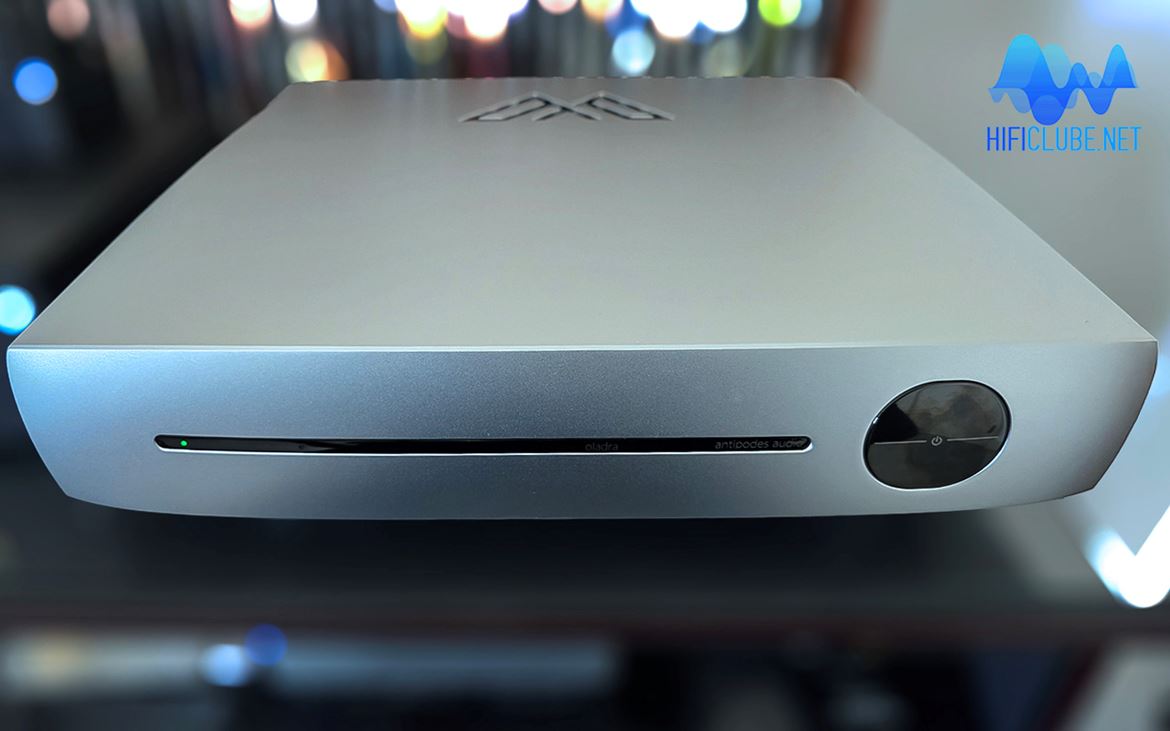
Roon Core
Despite its high price tag, Oladra doesn't have a dedicated control application. It only has what it calls a ‘Solution Dashboard’ for initial setup. After that, you'll have to use a third-party media player.
Most people opt for services like Roon, which combines an intuitive interface with advanced library management and streaming. Oladra works as Roon Core, so you don’t need a computer; a smartphone will do nicely to access the Server database.
However, less expensive or even free alternatives, such as SqueezePlayer, HQPlayer, or MPD with MinimServer, are available. Each has a subtle influence on sound quality. I found another app, mConnectLite, which isn't on the list but works well and is free.
Oladra also lacks a built-in DAC, so you must connect it to an external DAC using one of the many available connections. Subsequently, connect the DAC's analogue output to your system as per usual.
The higher the quality of the DAC, the better the sound, although its jitter performance is nearly irrelevant, as Oladra effectively controls jitter to femtosecond level.
This means you can get excellent results even with relatively modest DACs (USB connection), such as the iFI Diablo 2, which I used with headphones: Hifiman HE1000, Meze Poet, and Austrian Audio The Composer. I also used the Chord Hugo 2 to drive a Lab12 Mighty 10W Class A amplifier directly, with astounding sound quality that left me flabbergasted even at low-volume levels: a full, meaty, natural, dynamic, and organic, the kind I have only heard from master tapes.
Transformative arts
I also used the internal DACs of the HiFi Rose RS520, the Eversolo DMP-A10 and the Devialet Astra (SPDIF connection). I could easily have gathered a dCS Vivaldi, a D'Agostino amplifier and a pair of Wilson Audio Watt/Puppy. Still, I preferred to opt for a modest system in terms of DACs (except the Astra, of course), consisting of the Lab12 Mighty 10W valve amplifier and a pair of old Sonus faber Concertino originals. I’ve been listening to them regularly for years and know their voice well, and I wanted to hear how far Oladra raises the bar for more affordable systems.
A full, meaty, natural, dynamic, and organic sound, the kind I have only heard from master tapes.

Candy shop
Oladra arrived in my hands, brimming with music previously ripped by Ricardo Polónia (Imacustica) and thoughtfully catalogued. I felt like a child in a candy shop.
I began by using Squeeze to listen to Tidal and files stored on my Synology NAS, which sounded fantastic; however, the interface is, to put it mildly, outdated. I then transitioned to Roon to enjoy the files stored on Oladra: 2TB of music across all genres and resolutions.
Everything went so smoothly that I found myself listening to music for hours. I can’t remember the last time I listened to music for such an extended period. I don’t tire; on the contrary, I feel energised for the rest of the day. And when I wake up, I can’t wait to return to my system. Oladra must be doing something quite right.
Oladra is the cure for the digital pandemic.
While I write, I listen to Vivaldi’s Gloria by the Boston Baroque, and both the strings and the voices sound divine, with the trumpet no longer getting on my nerves as it did before.
Pandora's box
In 1983, CD escaped Pandora's box and unleashed all digital evils upon the earth like a plague. Like Prometheus, Mark Jenkins stole fire from the gods and restored hope for a better digital future for humanity. Oladra is the cure for the digital pandemic.
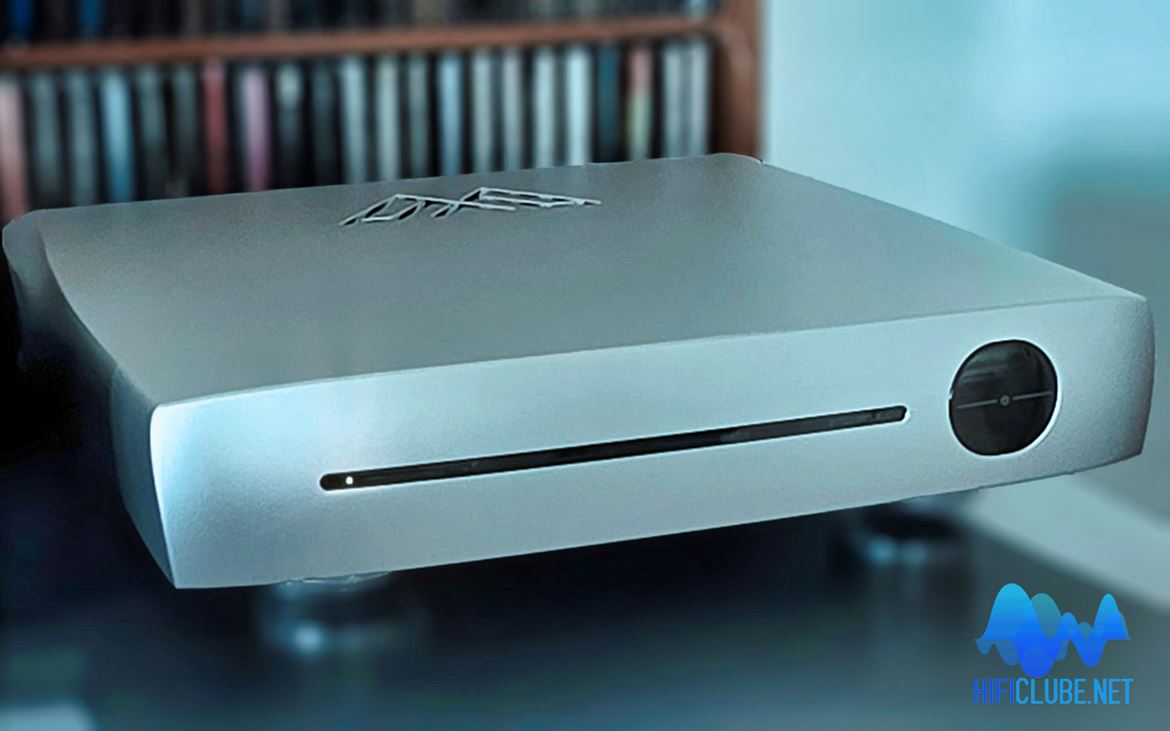
Madame Tussaud's CD
Some argue—I have done so myself on many occasions—that a CD played on a high-end player can rival the live experience. Perhaps they are correct on a technical level. However, the CD lacks the organic qualities that live concert LPs manage to preserve. A CD can be as uncannily realistic as Madame Tussaud's wax figures. Yet, both lack the essence of life—the soul.
We have noted that Antipodes Oladra is the alchemist who restores the breath of life to digital music. Now, this is more than a technical feat; it is something metaphysical: You will now be able to hear not just the sounds but also their profound significance. Anyone who has spent much time hanging out with wax figures must now adapt to socialising with flesh-and-blood musicians.
Antipodes Oladra is the alchemist who restores the breath of life to digital music.
Them There Eyes
Who hasn’t felt uneasy around wax figures? The eyes are particularly disturbing as they follow us with that glossy, hollow gaze.
In ‘Them There Eyes’ by Ella Fitzgerald, featuring Count Basie's orchestra, the eyes she sings about on the CD possess a similarly wax figure hollow gaze.
Oladra breathed new life into the song, and Ella’s voice once again stirred primal emotions while her swing and playful mood winked seductively at me. This feeling has always existed, yet it was hidden beneath the CD's digital sterility.
‘I fell in love with you the first time I looked into
Them there eyes
You've got a certain little cute way of flirtin' with
Them there eyes’
Conclusion: A New Audiophile Paradigm
The Antipodes Oladra is not just another example of obscenely expensive high-end audio—it is a declaration of principle, a digital manifesto. Merging cutting-edge engineering with a passion for music, it offers an experience transcending mere sound reproduction.
The quest to balance the precision of digital technology with the raw, authentic emotion of analogue sound has reached its goal. There is no turning back now; the journey is complete.
Oladra will be deeply missed in my humble abode.
Important Note: You can experience the Antipodes Oladra at the ImacShow on the 4th and 5th of April, as part of two systems that includes: System 1 - Wilson Audio, dCS, Dan D'Agostino, Transparent Cable, Ikigai Audio; System 2 - Magico, dCS, Robert Koda, Transparent Cable, Ikigai Audio
For more information: IMACUSTICA





